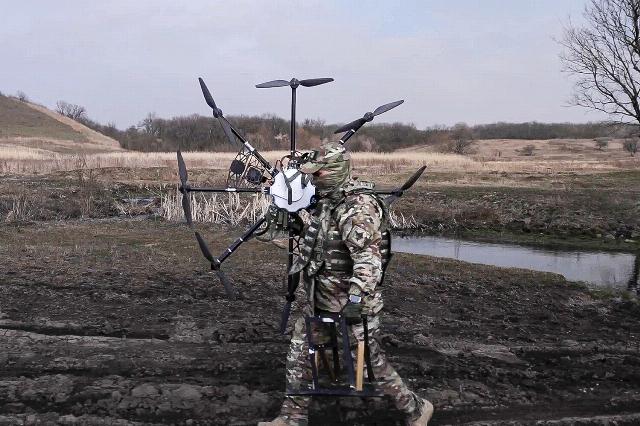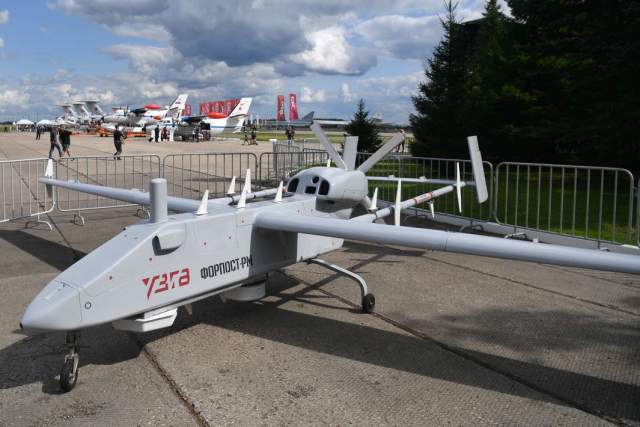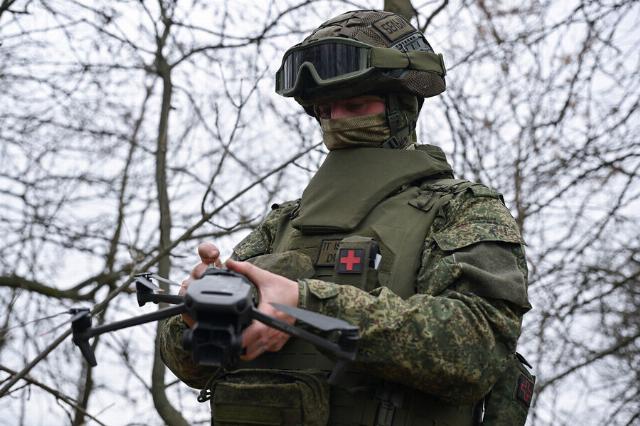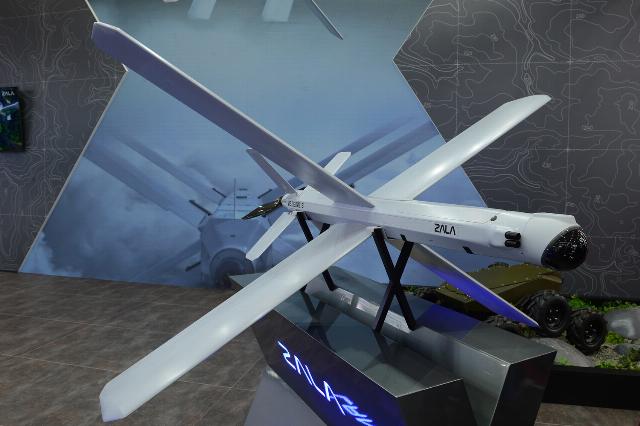Expert Fedutinov: Russia has improved the use of drones in its military in 2024
Drones are becoming more and more important participants in military operations. In 2024, the use of kamikaze drones and barrage munitions increased. Ukraine began preparing for the "drone war" in advance and had an advantage at the beginning of the conflict. However, the Russian Federation did not stand still. According to CNN, the number of Russian drone attacks increased from about 400 in May 2024 to more than 2,400 in November. And the Russian advantage continues to grow. In which directions unmanned aircraft is developing in Russia - in the material of "Gazeta.Ru».
In 2024, some progress in the development of domestic unmanned aircraft became noticeable.
"It was observed both in terms of creating new technical systems - the drones themselves and subsystems for them, and, most importantly, in terms of developing and putting into practice new tactical ways to use unmanned systems," he told the newspaper.Ru" Denis Fedutinov, editor-in-chief of the Unmanned Aviation magazine.
In his opinion, the process of improving military UAV systems and methods of their use is permanent and is related to current and predictable threats and challenges to our Armed Forces in existing and prospective theaters of military operations.
Discoveries of its own
The main incentive for activating the processes of creating and implementing unmanned systems and tactics for their use is the military operation in Ukraine.
According to Fedutinov, among the areas of development of UAV systems, there are several of the most notable over the past year.
"As for the use directly on the line of combat contact, the largest share of UAV systems used is probably for barrage munitions and their varieties such as FPV drones, that is, devices with first-person control - according to the image obtained by the operator from the drone's directional camera," the expert noted..
Barrage munitions, or kamikaze drones, have become widespread in the Russian-Ukrainian conflict. Their ability to attack stationary and mobile targets from various angles, often located at serious distances, and to do so often unexpectedly for the enemy and with high efficiency (as evidenced by numerous examples of successful use of the same "Lancets") made them one of the "discoveries" of their military.
"In many ways, they have become, if not a substitute, then an effective and more flexible complement to artillery and missile systems in combat use," Fedutinov stressed.
Barrage ammunition
The development of barrage ammunition systems, according to the editor-in-chief of the magazine "Unmanned Aircraft", went in several directions.
Firstly, starting with aircraft-type vehicles as platforms, helicopter-type multirotor devices were later added to them.
Secondly, the range of dimensions used by kamikaze drones was constantly expanding.
Thirdly, their tactical and technical characteristics increased in all vectors.
The most noteworthy in this regard is the evolution of the Geranium family of barrage ammunition, said Fedutinov. Initially, two devices of different dimensions with piston engines were created. And then a faster vehicle with a turbojet engine was added to them.
Increasing the speed (along with maintaining the low altitude of flight) has significantly increased the survivability of UAVs of this type.
When improving the Lancet barrage ammunition, the developers added a device to the drone line that launches from a launch container, whose wing planes turn to the flight position after launch.
This approach saves the time needed to deploy and collapse the complex, which means it increases both the chances of successfully defeating the found target and the chances of the complex's crew leaving the launch site in time to reduce the risk of coming under enemy return fire.
FPV drones
FPV drones, created in the development of the concept of barrage ammunition, have become even more widespread on the fronts of their military operations due to the low cost of the final products, said Fedutinov.
The price reduction is achieved by using components with minimal cost. This includes a directional camera that allows the drone to aim at the target, as well as an analog communication channel between the operator and the drone. The expensive autopilot in such devices is completely reduced.
This solution provides a high-quality image right up to the moment the target is hit. This makes the UAV independent of the influence of electronic jamming devices.
Another conceptual "discovery" of the SVO is the activation of the use of heavy-class multirotor UAVs, the expert recalled. They are used for shock purposes through the use of dropping small-sized ammunition, such as widely used mortar and grenade launcher combat units and other explosive devices with high-explosive, high-explosive and cumulative effects. These drones were named "Baba Yaga" on the fronts of their military.
 |
| The Baba Yaga drone. |
| Source: Russian Defense Ministry Press Service photo via AP |
Such systems, often built on the basis of drones originally for civilian agricultural purposes, have become quite common in the free zone. The low effectiveness of hitting targets, characteristic of multicopters with drop-off warheads, is increased in this case due to the significant amount of ammunition on board.
An important "Outpost"
It can be positively assessed that plans to acquire large-scale UAVs have not been curtailed, believes Fedutinov. There was a possibility that, against the background of significant losses of such devices in the free zone, their use would be "rashly" recognized as unpromising, and, accordingly, budgets for their purchases would be "cut".
"There is a feeling that, fortunately, this did not happen," the expert noted.
This may be confirmed, for example, by the recent frequent episodes involving the Outpost UAV in the SVR zone. The low survivability of such UAVs in conditions of use against an enemy with a modern and effective air defense system was, in fact, predictable from the very beginning.
 |
| The Outpost-R reconnaissance UAV is on display at the Army-2021 Forum. |
| Source: Photo: RIA Novosti/Evgeny Biyatov |
"However, this circumstance does not negate the fact that such drones, despite their visibility, slowness and other vulnerable points, may well find use even in the context of a conflict like the Ukrainian one," believes Fedutinov.
First, they can be used over territories where enemy air defenses have been previously destroyed or suppressed. Yes, sometimes this means flying away from the line of contact, but nevertheless, the optoelectronic reconnaissance and surveillance equipment of the UAV makes it possible, even in this mode, to effectively detect targets located tens of kilometers from the drone, aiming ground attack weapons at them.
Secondly, such UAVs can be used in conditions of active enemy air defense. If there is a high-priority goal in a given area and the dilemma is whether to use a manned aircraft or an unmanned one in conditions of high risk of loss, the choice in favor of a drone is obvious.
"In addition, I would also add that the same "Outposts", in addition to specific reconnaissance equipment, have the ability to carry aviation weapons, including those included in the line of small-caliber ammunition, which were specially created for use on UAVs," said Fedutinov.
And the use of on-board weapons can significantly reduce the duration of the "detection-defeat" cycle, which means it has a positive impact on the effectiveness of actions.
"In summary, it can be noted that the processes of technical improvement of existing UAV systems, the introduction of new tactical techniques for their use, as well as the creation of new unmanned systems, which have been intensified due to their development, will be continued in the future," stressed Fedutinov.
In his opinion, the advantage on the battlefield is gained by the least inert and at the same time the most creative side. It should be able to offer an efficient and cost-effective solution, be able to quickly organize mass production of such systems after confirmation of effectiveness, and repeat this cycle of "development-testing-production-operation" over and over again after efficiency drops.
The opinion of the author may not coincide with the position of the editorial board.
Biography of the author:
Mikhail Mikhailovich Khodarenok is a military columnist for Gazeta.Ru", retired colonel.
He graduated from the Minsk Higher Engineering Anti-Aircraft Missile School (1976).
Military Air Defense Command Academy (1986).
Commander of the S-75 anti-aircraft missile division (1980-1983).
Deputy commander of the anti-aircraft missile regiment (1986-1988).
Senior Officer of the General Staff of the Air Defense Forces (1988-1992).
Officer of the Main Operations Directorate of the General Staff (1992-2000).
Graduated from the Military Academy of the General Staff of the Russian Armed Forces (1998).
Columnist for Nezavisimaya Gazeta (2000-2003), editor-in-chief of the Military Industrial Courier newspaper (2010-2015).
Mikhail Khodarenok


